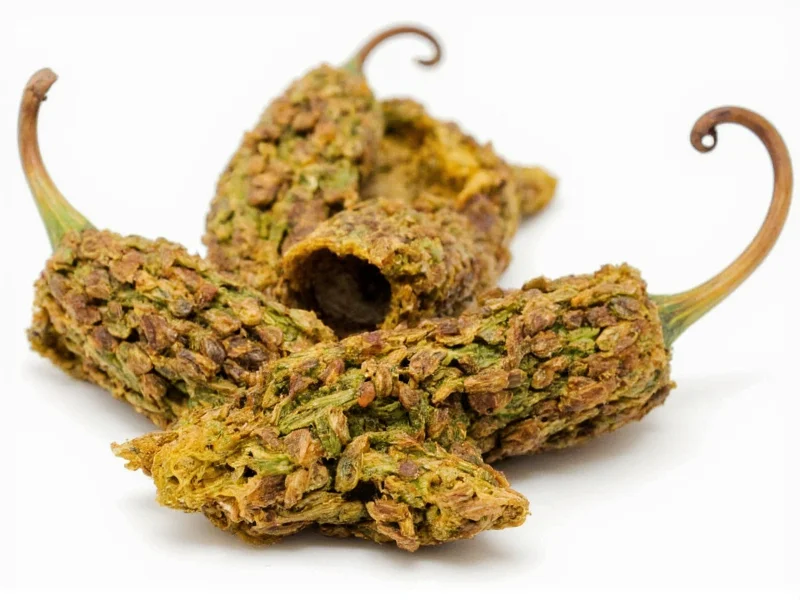Yes, a chipotle pepper is specifically a smoke-dried jalapeño. However, not all dried jalapeños are chipotles—only those that undergo the traditional smoking process become chipotles. A plain dried jalapeño without smoking is simply called a dried jalapeño or sometimes a mulato pepper, but it lacks the distinctive smoky flavor that defines chipotles.
Understanding the distinction between dried jalapeños and chipotles is essential for anyone exploring authentic Mexican cuisine or looking to replicate that signature smoky heat in their cooking. While both originate from the same fresh jalapeño pepper, the preparation method creates two distinctly different ingredients with unique flavor profiles and culinary applications.
What Exactly Is a Chipotle Pepper?
The term "chipotle" comes from the Nahuatl (Aztec) language, combining "chil" ( chili pepper) and "poctli" (smoke), literally translating to "smoked chili." This etymology reveals the critical factor that transforms a regular jalapeño into a chipotle: the smoking process.
True chipotles are made by smoke-drying ripe red jalapeños over wood fires, traditionally using mesquite or oak. This process typically takes several days and serves multiple purposes: preservation, flavor development, and color transformation. The smoking imparts that characteristic deep, woody flavor that distinguishes chipotles from other dried peppers.
Dried Jalapeño vs. Chipotle: Key Differences
Many people mistakenly believe that any dried jalapeño automatically qualifies as a chipotle. This confusion has led to numerous recipe failures when cooks substitute one for the other without understanding the critical difference:
| Characteristic | Chipotle Pepper | Dried Jalapeño |
|---|---|---|
| Preparation Method | Smoke-dried ripe red jalapeños | Air-dried or oven-dried without smoking |
| Flavor Profile | Smoky, earthy, complex with subtle sweetness | Grassy, brighter heat with less complexity |
| Color | Dark brown to almost black | Bright to medium red |
| Texture | Leathery, slightly moist | Dryer, more brittle |
| Heat Level | Moderate (2,500-8,000 SHU) | Moderate (2,500-8,000 SHU) |
The Traditional Chipotle Production Process
The authentic preparation of chipotles follows a specific method that has been used for centuries in Mexican cuisine:
- Selection: Fully ripe red jalapeños are chosen, as green jalapeños lack the necessary sugar content for proper smoking
- Preparation: Stems are removed, and peppers may be slit open to facilitate even drying
- Smoking: Peppers are placed in a smokehouse over low-burning wood fires (traditionally mesquite)
- Drying: The slow smoking process takes 3-6 days, with careful temperature control to prevent burning
- Finishing: Properly prepared chipotles retain some moisture, giving them a pliable, leathery texture
This traditional smoking method creates the complex flavor profile that makes chipotles so prized in cooking. The smoke compounds interact with the pepper's natural sugars, creating new flavor compounds through the Maillard reaction.
Culinary Applications and Substitutions
Understanding the difference between dried jalapeños and chipotles is crucial when following recipes or creating your own dishes:
When to Use Chipotles
- Adobo sauce preparations
- Barbecue rubs and marinades
- Smoky salsas and mole sauces
- Bean dishes requiring deep, smoky notes
- Meat braises like carnitas
When Dried Jalapeños Work Better
- Recipes specifically calling for dried jalapeños
- Situations where you want pure jalapeño heat without smoke
- When making rehydrated pepper sauces with brighter flavor
- Certain traditional Mexican dishes like chiles rellenos
Common Misconceptions About Chipotles
Several misunderstandings persist about chipotle peppers that can lead to cooking errors:
- Misconception: All dried red jalapeños are chipotles
Reality: Only smoke-dried jalapeños qualify as true chipotles - Misconception: Chipotles are a different pepper variety
Reality: They're specifically prepared jalapeños, not a separate species - Misconception: Chipotle powder is just ground dried jalapeños
Reality: Authentic chipotle powder must be made from smoke-dried peppers - Misconception: The heat level differs significantly
Reality: Both have similar Scoville ratings, but the smoke affects perceived heat
How to Identify Authentic Chipotles
When shopping for chipotles, look for these characteristics that distinguish them from plain dried jalapeños:
- Color: Deep mahogany to nearly black (dried jalapeños remain reddish)
- Texture: Slightly pliable with some moisture retention (not brittle)
- Aroma: Distinct smoky scent even when dry
- Labeling: Should specify "smoked" or "chipotle" (not just "dried jalapeño")
Be cautious of products labeled as "chipotle" that lack the characteristic smoky aroma, as they may simply be dried jalapeños being marketed under the more popular chipotle name.
Creating Your Own Chipotle-Style Peppers
If you're interested in the difference between dried jalapeño and chipotle preparation, you can experiment at home:
While true chipotle production requires specialized equipment, you can approximate the process with a smoker or even your grill:
- Start with fully ripe red jalapeños
- Remove stems and optionally slit lengthwise
- Smoke at 200-225°F using wood chips (mesquite, hickory, or oak)
- Smoke for 3-6 hours until leathery but not brittle
- Store in airtight containers with a moisture-absorbing packet
This homemade version won't perfectly replicate traditional chipotles (which use lower temperatures over longer periods), but it will demonstrate the transformative power of smoke on the jalapeño's flavor profile.
Substitution Guidance for Cooks
Understanding whether a dried jalapeño is a chipotle matters most when substituting ingredients:
- Chipotle to dried jalapeño substitution: Use 1 dried jalapeño plus 1/8 teaspoon liquid smoke per chipotle
- Dried jalapeño to chipotle substitution: Not recommended without adding smokiness
- For adobo sauce needs: Canned chipotles in adobo are irreplaceable for authentic flavor
- When smoke isn't essential: Dried jalapeños can substitute for chipotles in pinch
Remember that the smoky dimension of chipotles contributes significantly to their culinary role—it's not just about heat. This understanding of what is a chipotle pepper exactly can transform your cooking results.











 浙公网安备
33010002000092号
浙公网安备
33010002000092号 浙B2-20120091-4
浙B2-20120091-4